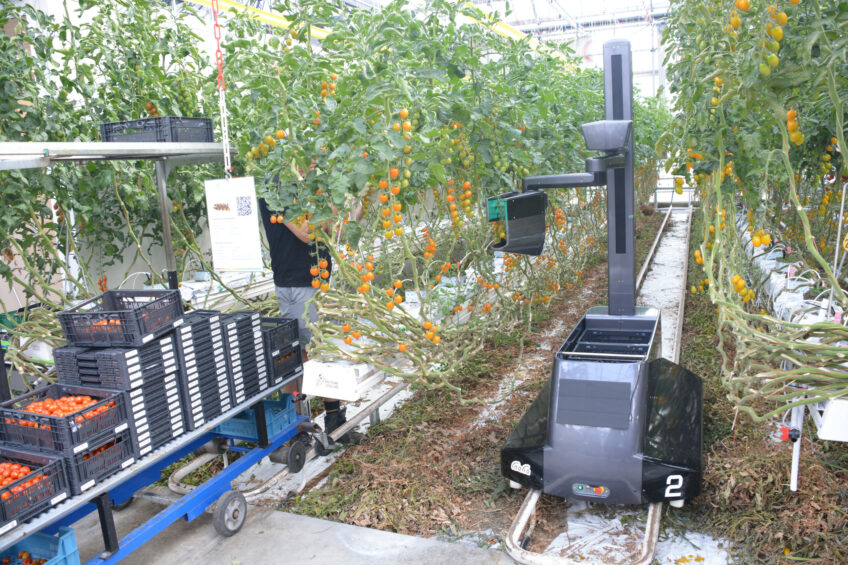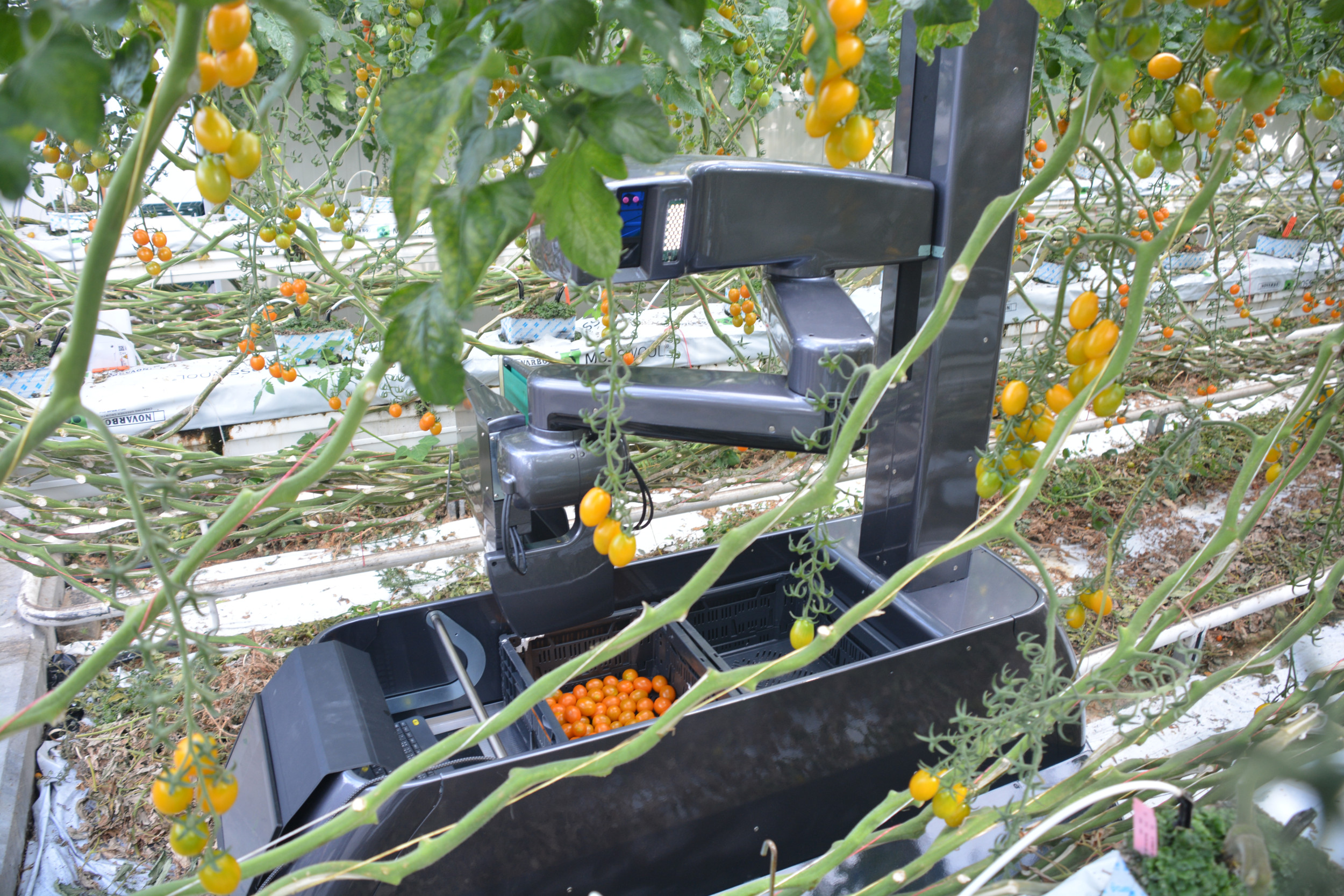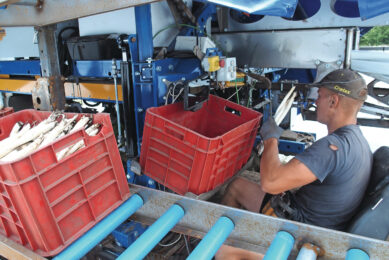Tomato harvesting robot one step closer to commercial version

The Japanese company Inaho has taken further steps towards making its snack tomato harvesting robot ready for practical use.
With a completely new design, the snack tomato harvesting robot from Inaho, which has recently been on display during several demonstrations at Tomatoworld in Honselersdijk, has become significantly more mature. Whereas the previous version could only approach the trusses head-on, the harvesting mechanism of the current variant can now also approach, grip, and cut the snack tomatoes from the side at an angle of approximately 60 degrees. This considerably increases the success rate. There are now fewer fruits that are too difficult for the robot to grip and cut because they are hanging partly behind a stem.
Furthermore, an additional camera has been installed, which, during harvesting, already determines the position of trusses in the crop row on the opposite side of the path. This can accelerate detection and movement when the robot travels back along the opposite plant row.
Tomatoes roll into a collection tray
In the previous prototype, the harvested fruits fell and rolled via a chute into the harvest container underneath the robot cart, to break the fall. This chute has now been replaced by a collection tray directly under the harvesting mechanism. After collecting several fruits, the robot arm then moves to the harvest container. A flap opens, and the tomatoes roll from the temporary collection tray into the crates. Smart software calculates whether it is more efficient to first collect a few extra fruits—if a nearby subsequent truss turns out to be easy and quick to reach—or whether the robot arm should first empty its collection tray, as the detection cameras might need time to detect the next truss and determine the correct approach route for the gripping mechanism.
 The robot arm delivers the collected fruits neatly to the harvest container.
The robot arm delivers the collected fruits neatly to the harvest container.The harvested snack tomatoes are still being distributed over three harvest crates side by side, but for future versions, a rotating stacking system has already been designed, so that the robot can carry more containers. Once the robot has returned to the main path, an operator still needs to manually transfer the full crates onto a transport cart, which then goes to the sorting and packing hall. Moving the robot to the next path is also still the operator’s responsibility, although this could become an autonomous function in the future.
Robot-friendly varieties
Whereas most other harvesting robot manufacturers aim to achieve the highest possible percentage of successfully detected and harvested tomatoes, for example around 80, Inaho deliberately chooses to build a much more attractively priced robot that only picks the easiest to harvest tomatoes. The success rate is expected to be approximately 45.
Ideal harvesting conditions are the basis here. Multiple factors improve harvesting performance. Breeding plays an important role in this. A partnership with a breeder who can develop a robot-friendly variety is therefore still a wish of the robot builder. Switching at Tomatoworld from the variety Sweetelle to Dormaplum already resulted in an improvement, for example. The more compact and straighter trusses of the latter variety make it easier for the robot to find and harvest fruits.
Longer shelf-life fruits, which can remain on the truss for a little longer, also improve harvesting efficiency. The truss can then be fully harvested in fewer subsequent visits. A slightly higher fruit weight, either due to genetic characteristics or truss pruning, also increases the number of kilos harvested per hour. For example, using the Qlipr system, instead of twisting in plants, makes it possible to have more trusses hanging at the front of the stem, easily accessible.



